Unwritten Show marks third original student staging

High tension after the winners of the corrupt pageant were announced. Pictured left to right, Niya Borst, Sara Huber, Richie Crane, Ella Karcheski, Sara Ireland, and Victoria Brooks.
Simon Markow

High tension after the winners of the corrupt pageant were announced. Pictured left to right, Niya Borst, Sara Huber, Richie Crane, Ella Karcheski, Sara Ireland, and Victoria Brooks.
Across two nights of performances, Unwritten Show drew a crowd of over 250 people to the Housatonic auditorium for “The 37th Annual Holbrook Pageant.”
The original production was full of drama, humor and heart, showcasing what happens when students at Housatonic Valley Regional High School take the stage. From writing to directing, set design, costumes and acting, students handled every aspect of the show.
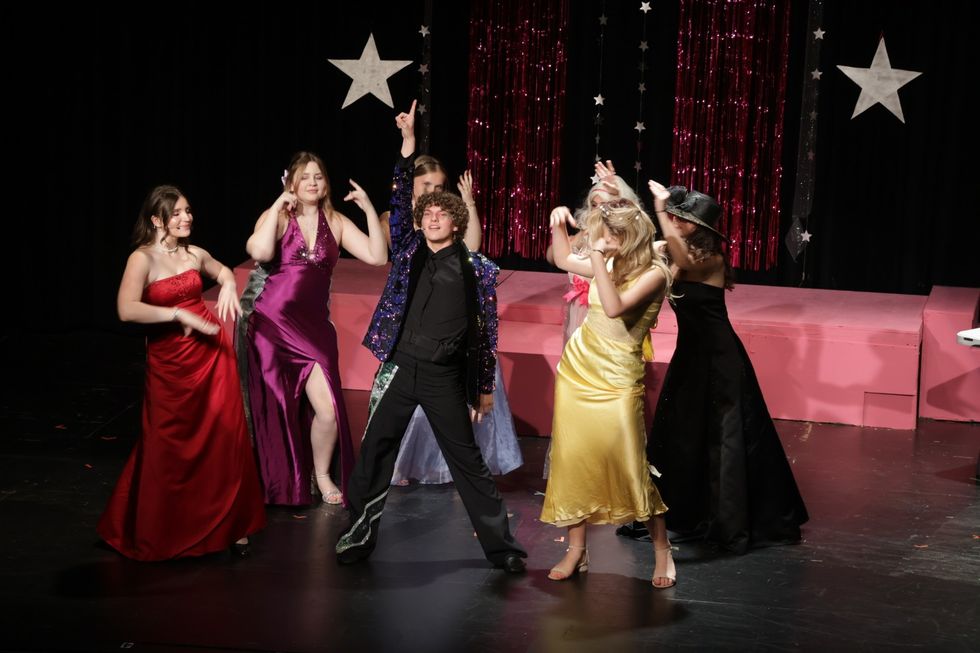
The performance used the setting of a beauty pageant to explore deeper societal issues through satire. “We wanted to speak to the stereotypes and issues that are often faced in the performance world,” co-director and production manager Alex Wilbur said. These matters included inequalities such as nepotism, gender roles and ulterior motives. The students intended to use satire as a tool for reflection, not accusation, and to push performers toward inclusivity. “We need to create a community and support each other in our endeavors, because that’s what it’s all about,” Wilbur said.

Sara Huber, the writer and co-director, said the writing process for this show was different than anything she had written before because it didn’t involve extensive planning. “I knew automatically what I wanted to write,” she said. “The message is that even when faced with something that’s corrupt, you can still find community in that and still find a way to come out of it stronger.” Wilbur noted that the creative process was rooted in personal experience. “The best ideas come from self-exploration and the themes of your own life or things happening around you,” he said.
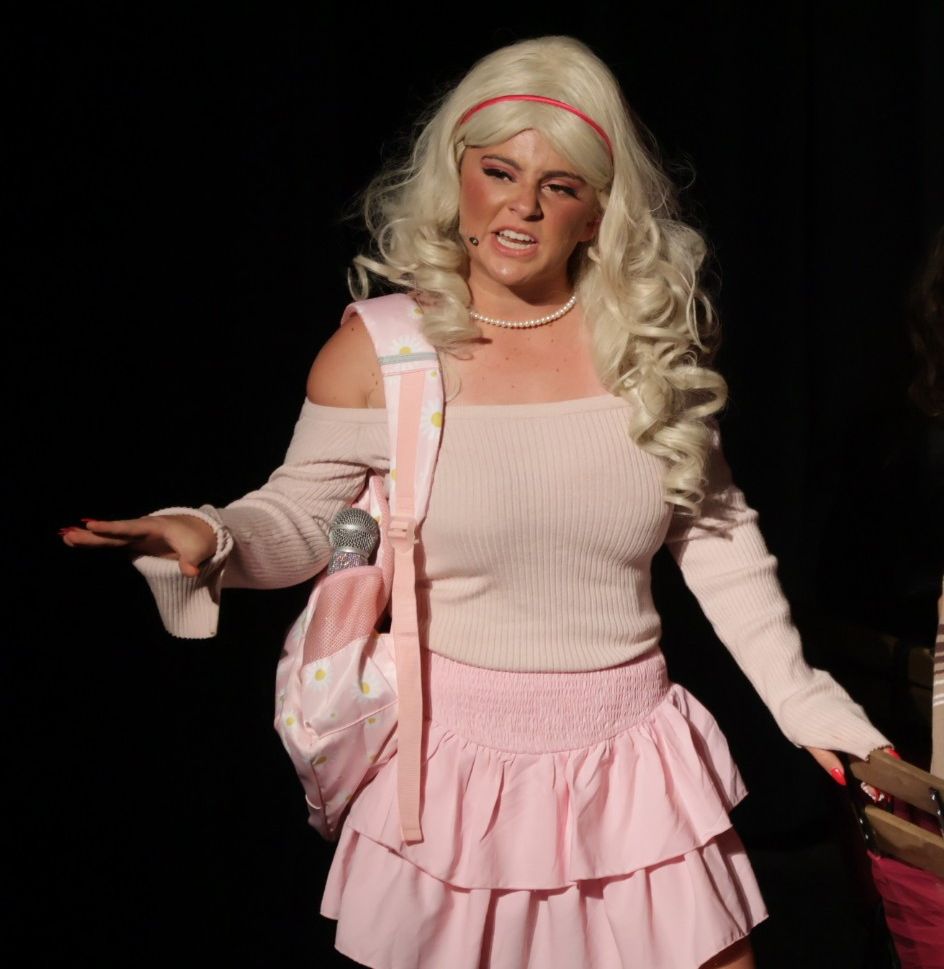
The cast and crew were pleased with the turnout. All donations made will benefit the program in years to come. The success of this student-led initiative was meaningful to everyone involved. “It is a perfect example of our school community’s ability to create,” Wilbur said.
Actor Richie Crane, who played Nick Grain — the only male pageant contestant — was thrilled with how the production helped prepare students for the future. Passionate about dance and aiming to become a choreographer, Richie not only performed in the show but helped choreograph the cast alongside Elizabeth Forbes and Ella Karcheski. Crane got to experience firsthand what the profession might look like alongside his supportive peers. “Dancing is one of the things I love to do most,” he said. “I wouldn’t get this opportunity anywhere else.”
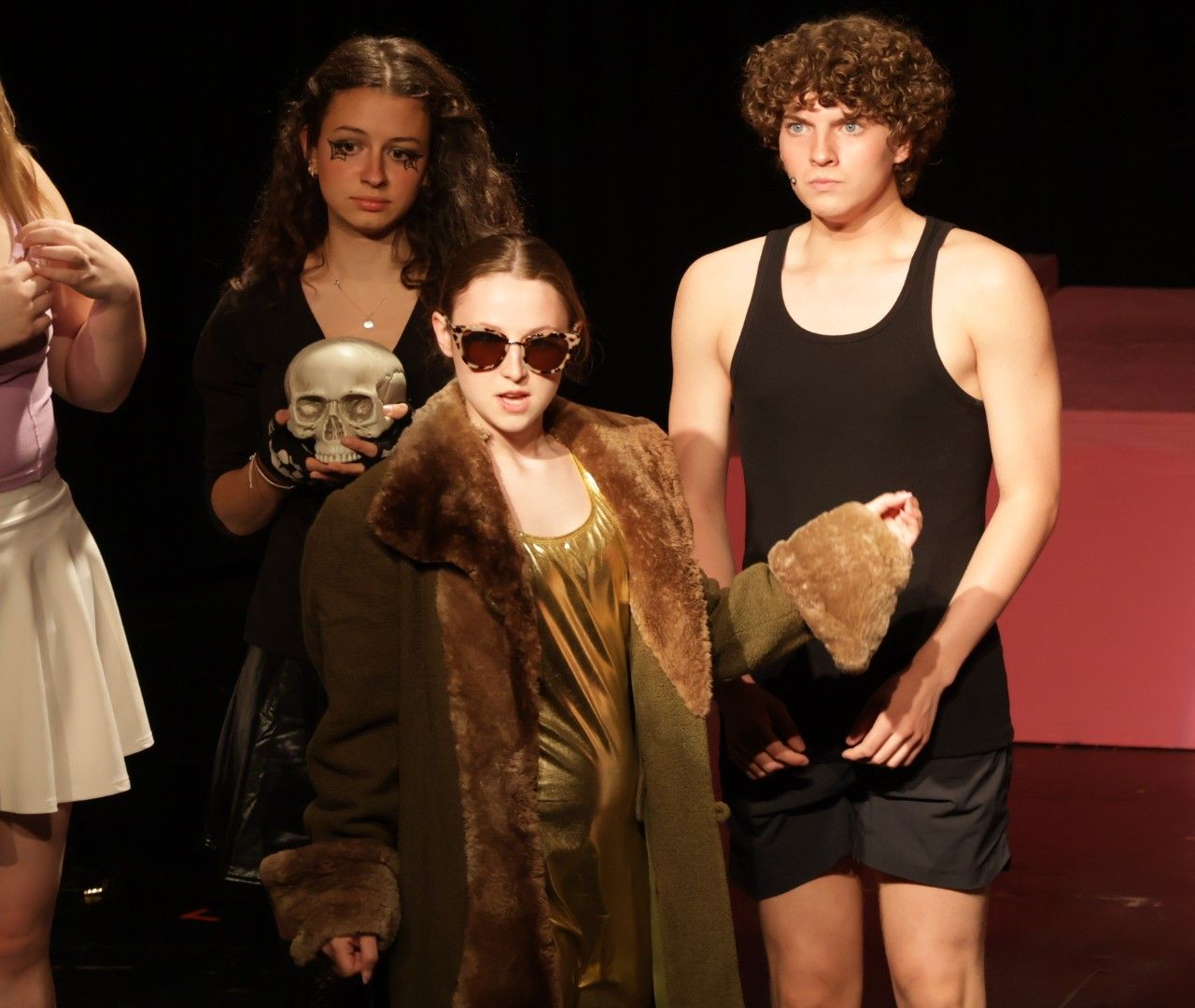
Another element that made the production stand out was the absence of a traditional lead role, allowing every cast member to contribute to the story equally. This was intentional. Huber said she purposely wrote an ensemble based production. “That to me is so important to the spirit of Unwritten Show because it’s really about the students coming together and making something.” The decision to avoid a lead role mirrored the show’s message of equality, a theme displayed in both the storyline and developmental process. “Everyone had their own moment to shine in the spotlight and no one person was standing out, you don’t get to see that in every musical,” Crane said.
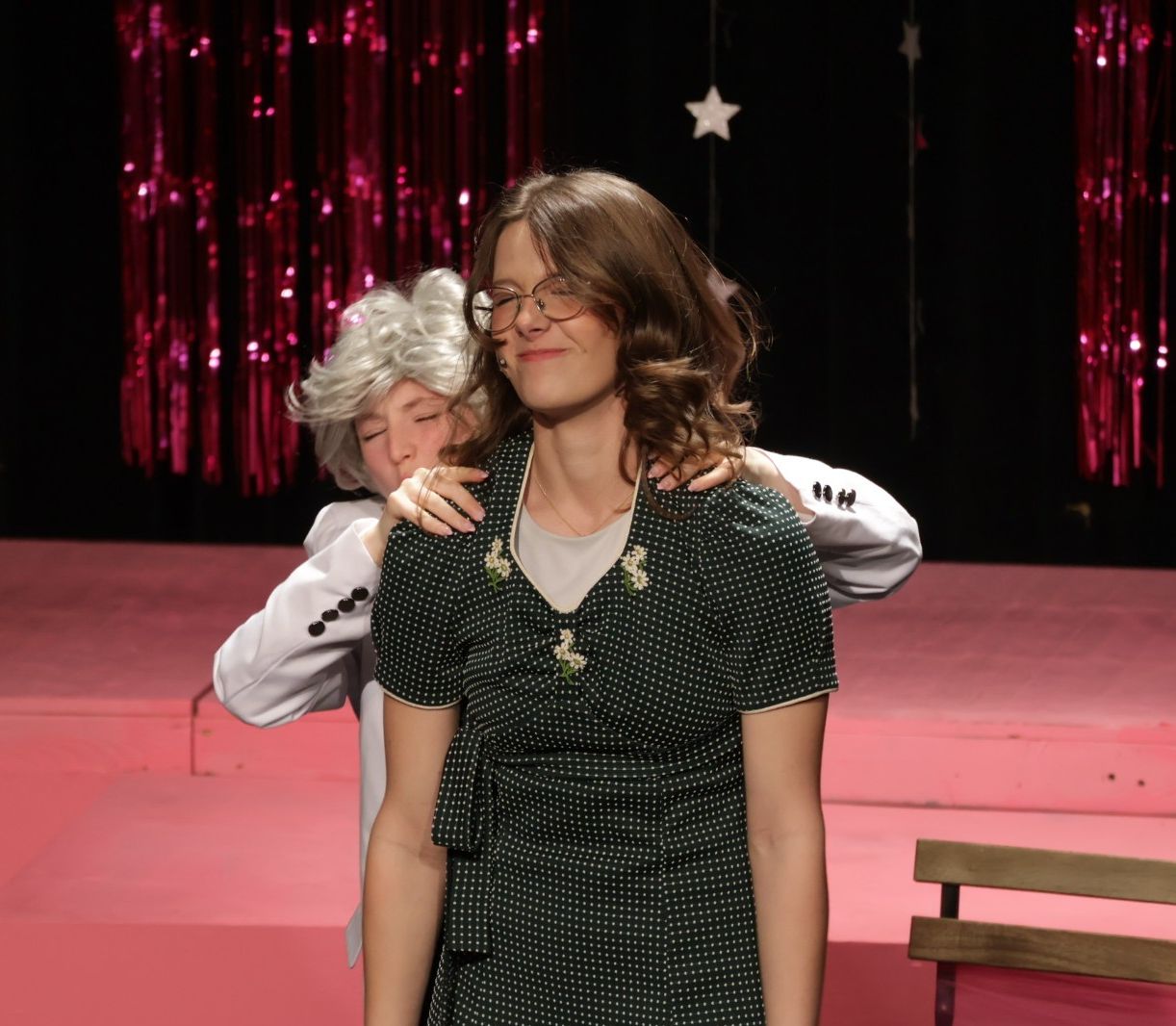
“The 37th Annual Holbrook Pageant” was HVRHS’s third student-led production. The co-directors agreed that the Unwritten Show is more than just a production, it’s an incredible opportunity for students to explore their creativity and collaborate in meaningful ways. “It shows students that they can pursue their dreams,” Wilbur said. “It also shows teachers and professionals how hard we are working.” Ultimately, the show served as a reflection of the students’ dedication and collective effort.

The Community Closet at HVRHS is open for students to take clothes for any reason during the school day.
What started with one unexpected donation of clothes has grown into a quietly impactful resource for all students at HVRHS: the Community Closet. Now located in a spacious area above the cafeteria, the closet offers free clothing to any student for any reason.
The idea began a few years ago when a community member reached out to the former superintendent wondering if anyone at the school could benefit from used clothing that would otherwise go to waste. The superintendent then got in contact with Rachel Novak, the school social worker. “Once I had all those bags of clothes in my room, I was like, ‘I should put this in a space,’” Novak said. Her simple idea eventually became a full-sized closet accessible to all students.
From the beginning, Novak envisioned the closet as an inclusive space. “It’s open to anybody, it’s not just based on economic needs,” she said. Sustainability also plays a role. “Thinking about the environment, some students like to thrift and just get clothes that way,” Novak said.
After the initial donation, contributions continued to grow. “I reached out to our staff members and faculty,” Novak said. The most consistent donations come from the faculty at HVRHS and a few community members who learned about the closet. Finding teenage-appropriate clothes has been a challenge. “I get a lot of donations that are nice, but I don’t think teenagers would want to wear them,” Novak said.
Another ongoing obstacle has been awareness. Many students don’t know the closet exists at all. “That’s been the hard part,” Novak said. “Getting it out to the wider community of the school.” Novak is looking for students and staff to spread the word. “It helps because our school nurse knows and other faculty members,” she said. “When they know a student needs something, they just bring them up.”
Looking ahead, she hopes to promote the space more actively. “When we come back from this break, I do plan to … get fliers and all that up and going,” Novak said. There may even be an upcoming expansion — she has discussed the possibility of turning part of the area into a food pantry. “That would be more of a need-based system for students,” she said. “But right now, promoting it is where I’m at.”
The Community Closet is well-stocked currently. “Just because of the amount of clothes I have, I’m not accepting any more donations until I clear some stuff out,” Novak said. She is still willing to make room for more fashionable, teen-friendly items donated by students. “That way I’ll have more teenager approved clothes.”
Above all, she wants students to know that no one is limited to using the space. “Sometimes there’s a stigma around it … like, ‘I don’t need help. I don’t want to take away from anybody else that may need it,’” Novak said. Due to the amount of clothes, students should feel welcome to use the closet for any reason. Some students even grab items last minute for sports and activities. “It’s important for kids to know it’s for everyone.”
Whether a student wants to thrift clothes sustainably, forgot to pack clothes for an after-school practice, or is in need of a new outfit, the Community Closet is a resource for all.
Sophomore Eliana Lang enjoys her Housy Shack cookie.
Now in its second year, the Housy Shack is a hit among students. The special education department-run store that sells warm cookies, drinks and other snacks to students and teachers draws people to a room in the back hallway every time it’s open.
The smell of warm cookies welcomes visitors to the store with snacks, drinks and even Housy merchandise for sale. The cookies are definitely the favorite, sometimes lines go out the door to get one before they sell out.
The cookies are so popular that the store had to increase prices from 50 cents to a dollar and implement a four cookie per person maximum. The Shack sells about 40-100 cookies per day and has about 20-60 HVRHS customers visiting per day.
Julie Browning and Heather Strid, two of the HVRHS faculty members that help run the Shack, said their goal was to create real-world job experiences as well as real-world shopping experiences for students at HVRHS. “Learning the skills to work in the world can be taught in a classroom, but the lessons are more meaningful and valuable when they are applied in real work situations, which is what we create through the school store,” Browning said.
The original purpose for the store seems to be working, as several students are learning important skills. Students said the store taught them skills like counting money, checking inventory and cleanliness along with social skills and customer service that could help in the professional world after high school.
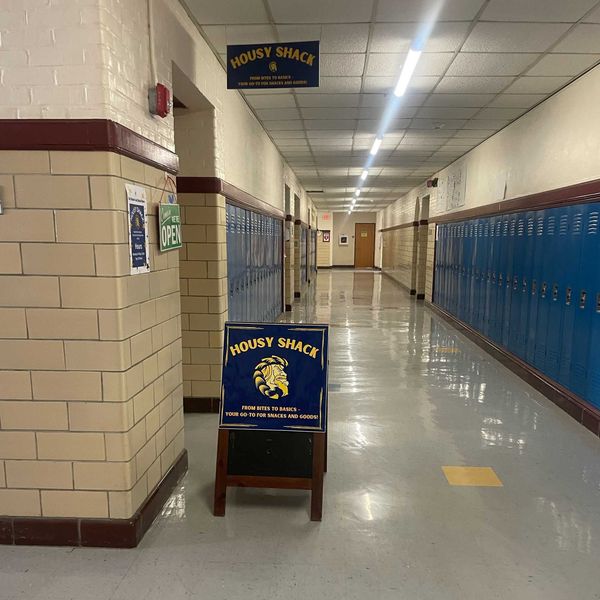
As the store quickly became a hit, organizers were faced with the challenge of finding funding. “When we started planning to start the school store two years ago we needed money to buy equipment, supplies and food to start it up but were not sure how to get it,” Browning said. “Mrs. Strid came up with the idea of applying for a grant from the 21st Century Fund to help us get started and they were so generous.” That grant has been crucial to the success and growth of the school store.
Not only does the Housy Shack benefit the special education department, students said it fosters a sense of community throughout the school. “School store cookies are my favorite thing ever. They brighten up my day,” said Eliana Lang, a sophomore at HVRHS. Dayana, one of the student staffers at the Housy Shack, said her favorite part of working in the school store is when students come in to make purchases. She enjoys talking to them and ringing up their orders on the cash register. The Housy Shack brings people together and offers the opportunity for students to connect with each other.
As the school year continues, the members of the school store look forward to expanding their inventory by creating and selling a variety of Housy merchandise — t-shirts, sweatshirts, water bottles, and more. “I have had several students put in requests for certain hats, key chains, etc. … so there will be more of that to come,” Browning said. Last school year, profits were all invested back into the school store. “This year we are hoping to make more of a profit and will look to use the money that we make for field trips, outings as well as opportunities to donate and give back to the community,” Browning said. They also would like to use the school store to fundraise for other causes. “Right now we are collecting donations for The Little Guild Animal Shelter, so if anyone has pet supplies they would like to donate please drop them off in exchange for a cookie,” Browning said.